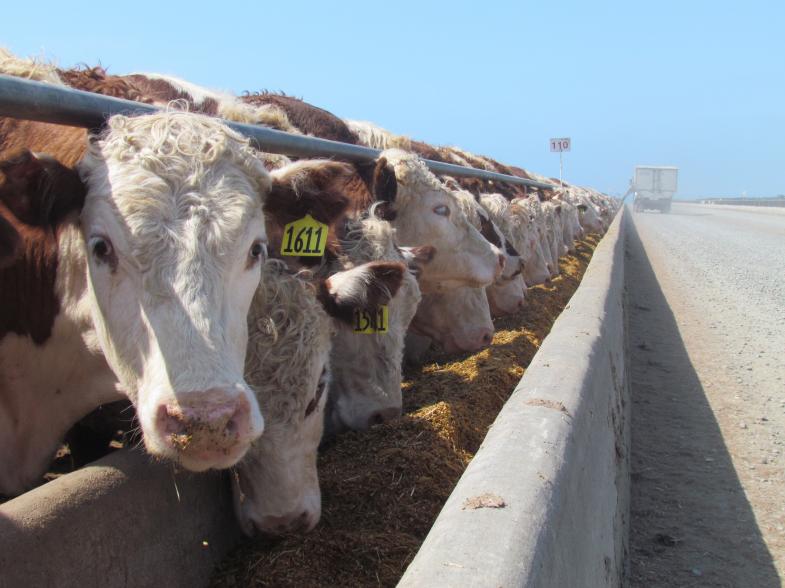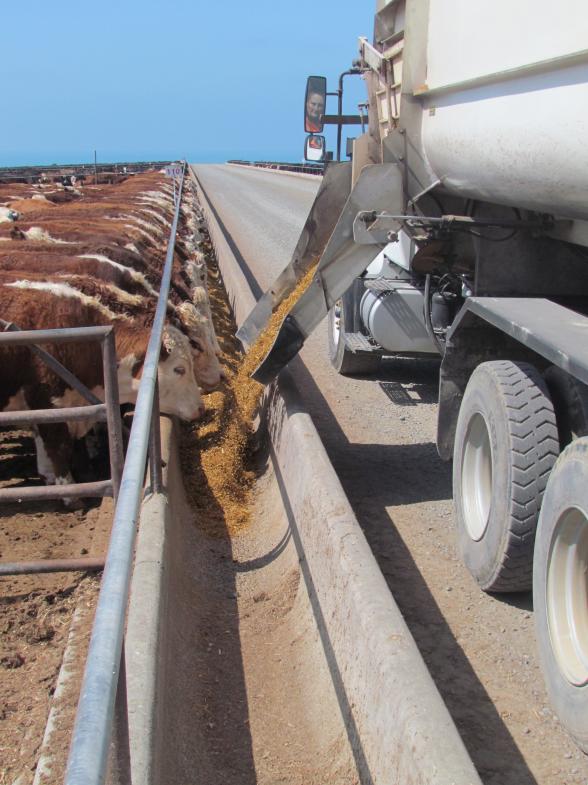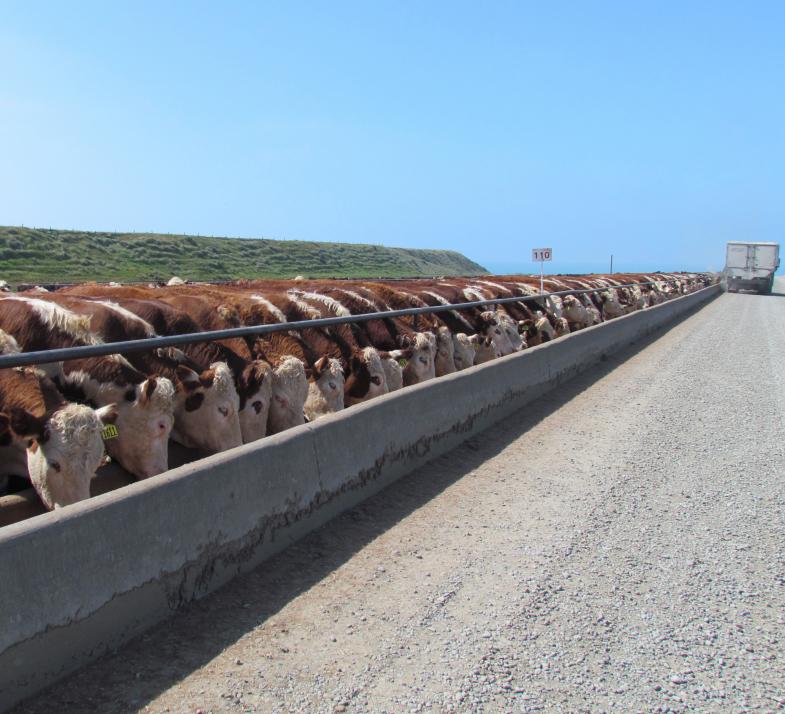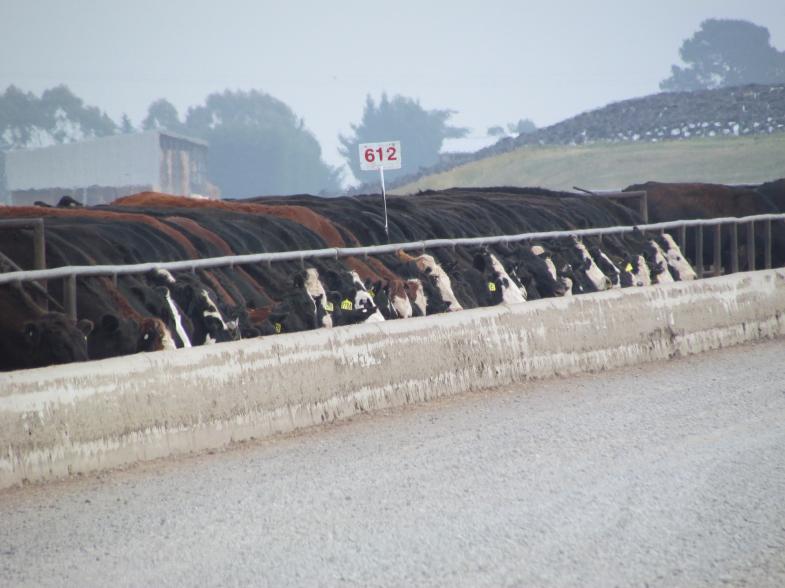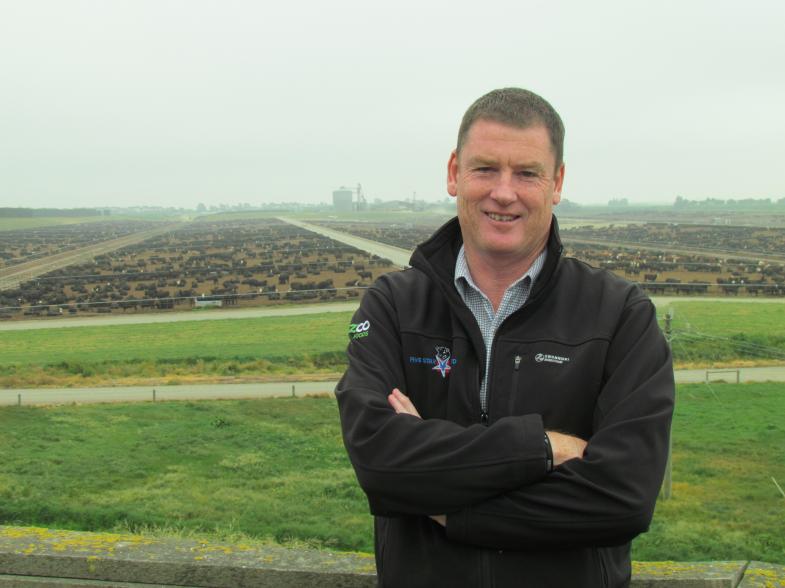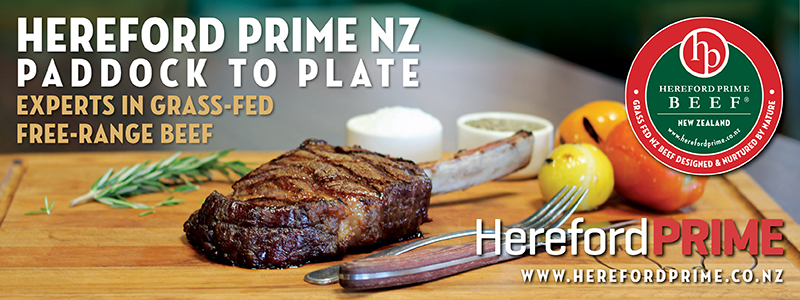 |
|
|

Herefords carve out a place at Five Star Beef feedlotWords / Photographs by Natalie Campbell
Increasing market demand for New Zealand beef means Herefords are finding a place in the country’s only commercial feedlot. Demand for New Zealand grain-fed beef is growing alongside increasing market orders for grass-fed beef, and that means Herefords are carving out a place in the Angus dominated Five Star Beef feedlot. Five Star Beef feedlot, near Ashburton, is New Zealand’s only commercial feedlot, and this change in the business genetic landscape allows them to supply more beef to both export and domestic markets. Livestock procurement manager for Five Star Beef, Michael Coote, says he’s seen an increase in demand for New Zealand’s grain-fed beef, alongside growing demand for the country’s grass-fed beef. “It is a market that’s growing,” he says. The feedlot is taking on larger numbers of pure Herefords, this past year up to 2000 pure bred Herefords have joined the several thousand Hereford Angus cross cattle to be finished in the system. Numbers being finished at Five Star Beef are lifting across the board. Michael says the feedlot can hold 20,000 head at one time and they are on target to meet 2017’s targeted throughput. Since Herefords have become more common on the feedlot, Michael says they have learnt that they need to be taken to 20kg heavier to reach adequate marbling scores, a trait synonymous with feedlot beef. He says there has always been a component of Herefords in the feedlot but now there are ‘mid-term’ programme customers who will specifically take the breed. He also says the Hereford cross cattle do well on the feedlot and staff like working with Herefords because of their placid nature. At the time of writing, a line of 180 pure Herefords had been sourced from Southland from Glenaray Station and combined with other Hereford mobs to fill a pen. Those animals were put into a mid-term feeding regime and will be sold under the Wakanui label domestically and some will head offshore. Feeding regimes are closely monitored at Five Star Beef with a strict structure in place. Feeding out begins at 5.30am with pens fed twice a day. Michael says the aim is to have feed in the bunks available 23 hours a day. The feedlot is manned 24/7 and the feed levels are checked twice during the night. Feed rations are a blend of grains, maize, silage and molasses, which is mixed and loaded into trucks that deliver rationed amounts to each pen of cattle specific to the market outlet. All the rations are monitored and adjusted accordingly depending on consumption and weight gain and the length of feed regime that particular pen is on. There are several different feeding regimes in place at the feedlot. These include: long-fed regime, 240 days; medium-fed, 125 days; and short-term, 75 days. In a typical day the feedlot uses more than 200 tonnes of feed including wheat, barley, maize and molasses. The consumption of feed varies throughout the feedlot, but Michael says the average daily feed intake is 11 to 11.5 kg DM/hd/day. All feed and water is tested for quality regularly. Water is sourced from a 45m bore and Michael says water quality is critical in the efficient running of a feedlot, and the bore is backed up by a generator and farm irrigation well. “Water quality can affect feed intakes and our troughs are scrubbed weekly,” he says. Quality control also extends to all feed supplied to the business and the company aims to source as much of its feed and resources locally as possible. All grain trucks are weighed and samples taken for contamination testing on every load. The electronic monitoring has reduced waste and also provides an indication to feedlot staff of how much the cattle are consuming on a daily basis. There are about 22 truck and trailer units that come and go each day from Five Star Beef. Those trucks can be carrying straw, grain, cattle (about 750 head leave the feedlot each week), or carting manure out. Michael says winter rainfall (on average 570mm) has an influence on feedlot waste, but between 120,000 to 130,000m3 is collected annually. The liquid effluent is spread on the Five Star Beef-owned farm, and about 35,000 tonnes of solid manure (annually) is sold to local farmers. Michael says 88% of the nitrogen waste is in solid manure. In keeping with the ethos of being a local business, there are 23 farmers who grow maize crops especially for Five Star Beef, and the manure collected from the feedlot is offered back to the contract maize growers. Being locally focused extends to the purchase of machinery, staff, and sourcing stock feed locally as well. There are 32 staff employed by Five Star Beef and the feedlot is manned 24/7. This includes five stock people, who ride each pen daily by horse looking for any animal health issues or injuries. If an animal is unwell it’s drafted off and moved to one of the hospital pens for treatment and monitoring. The Five Star Beef feedlot sits in picturesque surroundings. The platform was dug into the farm that it sits on and is flanked by Mt Hutt and the Pacific Ocean. It is the only commercial feedlot in the world located beside the sea, hence the main beef brand coming out of Five Star Beef is the Ocean Beef brand. “Ocean Beef is our main brand of beef because of the feedlot’s proximity to the sea,” Michael says. The unique positioning of the feedlot has an important role to play in the success of the business. The sea breeze keeps cattle cool during summer months and the wind clears any dust. Even though it is modelled on Australian feedlots, Michael says there are no issues with heat, humidity or dust like the Australians battle with. He also credits the unique location with minimal animal health issues, with the majority of animals only being treated on arrival. During winter straw beds are used, and this keeps the cattle warm and maintains live weight gain momentum through the colder months. The straw is chopped up and layers added to the bedding. It slowly breaks down and is cleaned out regularly. The flow of cattle sees yearlings arrive at Five Star Beef in October and November and acceptance of two-year-old cattle is reduced at this time. Most of the cattle are on a 120-day feeding regime, with some longer and others shorter. Once an animal arrives at Five Star Beef it is fitted with a feedlot tag that is cross-referenced to its NAIT tag. A new animal is weighed and treated with a pour-on and 5-in-1 vaccine. The cattle are tagged on arrival in a Silencer hydraulic squeeze crush that was imported from the United States. Michael says it is a superior crush and easily handles the 40,000 animals that pass through it annually. There is full traceability of the animal from when it enters the feedlot through to the consumer. The yearling cattle fall into two weight categories, which determine the feeding programme they are placed in. The majority of cattle are fed in mid- to short-term programmes. Cattle arrive and are initially weighed as a mob to establish an average weight. They are then individually weighed soon after and tagged.
Five Star Beef feedlot is 100% ANZCO Foods-owned. The ownership structure offers market opportunities, with beef being sold into Japan, the EU, Middle East and China, with markets constantly growing. The farm surrounding the feedlot is also ANZCO-owned and is home to calves purchased from the North Island each year, complementing the feedlot component of the business. Calves are bought in at 230kgLW before they make their way to the feedlot in late spring to early summer. South Island calves are also bought in weighing 180-210kgLW, and those animals join the feedlot slightly later. The neighbouring farm is spread over 500ha. It grazes 600 calves and 400 ewes and is run by a manager. It also grows maize, barley and silage used on the feedlot. To supply ANZCO Foods Five Star Beef feedlot, contact Michael Coote on 0274390889.
[ Return to main page ] |
